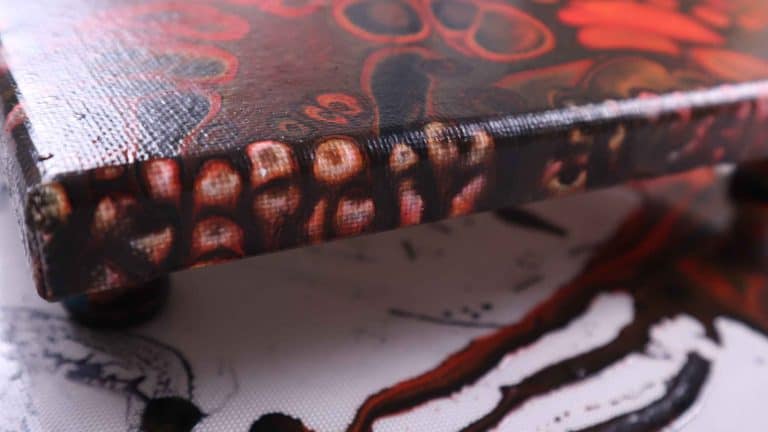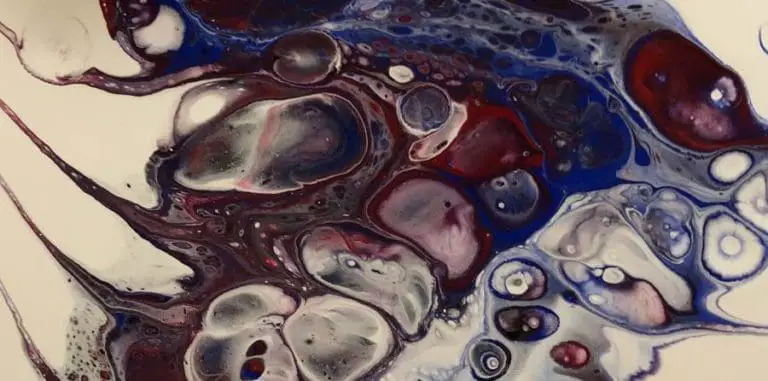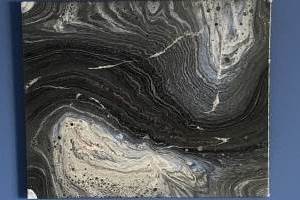Is Pour Painting Art?
When you go to your favorite local art gallery, what is it that you expect to see? Something that moves you, or something that captures a feeling and conveys it back to you? The definition of art is a fickle thing where every person has their own opinion. As with any artistic pursuit, acrylic paint pouring is all in the eye of the beholder.
Is pour painting really art? Yes, acrylic pour painting is definitely art. This artistic medium is embraced by professionals, journeymen, and aspiring artists alike. You can see the love that people have for acrylic pouring every time you show someone your pieces or when you have them join you in their creation.
The definition of art is very subjective. Many would not see “art” in the 1s and 0s of a software program. Others might not see art in the abstract creations of modern aficionados. I would make the case that art is what moves you; what creates emotion outside of rational thinking; what inspires you and influences you to try something new or something difficult.

What is Art?
According to Dictionary.com, art is “the quality, production, expression, or realm, according to aesthetic principles, of what is beautiful, appealing, or of more than ordinary significance.”
I find it fascinating that there are so many different ideas out in the world about what art is. Can it be natural? Does it have to be created? Does more than one person have to appreciate the product to consider it art?
In a TEDx Talk from Cindy Meyers Foley, Executive Assistant Director and Director of Learning and Experience at the Columbus Museum of Art, she gives some great insight on art.
Art is often considered the process or product of deliberately arranging elements in a way that appeals to the senses or emotions.
The definition of art is open, subjective, debatable. There is no agreement among historians and artists, which is why we’re left with so many definitions of art.
Cindy Meyers Foley, Executive Assistant Director and Director of Learning and Experience at the Columbus Museum of Art
With so much variation and contradicting definitions, I believe it is up to every individual to determine what art is for themselves.
Why do Art?
When an artist creates, I believe they have two primary objects. First, they want to illicit some kind of emotion in themselves. They want to feel their art. These feelings created by their works include energy, passion, angst, desire, approbation, revulsion, and many others. They have a need, whether conscious or unconscious, that needs filling.
The second objective is to inspire others. The desired inspiration is often, but most definitely not limited to, awe, wonder, and introspection. They want others to join them in their quest for understanding or their journey to perfection.
Every person is going to see and feel art in a completely different way. Some will appreciate, while others are offended or just don’t understand the art in question.
Acrylic Pouring is Art
If you have never done an acrylic pour before, I assume you are here because you’re interested in finding out more. Why? Did you see an Pinterest pin, Instagram post or a YouTube video where someone made something eye catching that you couldn’t look away from? Do you want to know more about how you might be able to do it yourself?
For those of you that have done pours before, why do you keep going back? What is it about mixing colors and pouring them on a canvas that makes you want to do it over and over again?
When someone views your acrylic paint pouring for the first time what is the first thing they say to you? Is it an exclamation of amazement? Do they immediately let you know what the painting reminds them of? Or do they just put their noses into the pieces to examine it in detail and say nothing?
For me, acrylic paint pouring lets me feel like I can create something that will bring joy and wonder to myself and to others. I love experimenting with colors, mediums, techniques, and painting surfaces. It gives me a focus that lets me put my cares and worries aside without making them seem small or trivial.
The fact that acrylic pouring can arouse this much rumination is proof positive that it is a form of art.
Art vs. Craft
Google “Art vs. Craft” and you’ll find thousands of debates on what is and what isn’t. There is no real consensus on the topic. Some believe that a craft is something utilitarian created to be used. Others believe crafting determined by how an item is made or the intention behind why it is made.
This ephemeral definition of crafting when compared with the previously stated definition of art leaves so much gray-area there doesn’t appear to be any white or black to be found.
This difference of opinion doesn’t serve a purpose other than providing yet another topic on which a debate can form. The only practical solution appears to be “to each his own”. Craft and art don’t have to be mutually exclusive nor do they need to be categorically separated.
Related Questions
Who are some famous acrylic pour artists? Acrylic pouring, or flow acrylic, is one technique that many artists use during their career. A few that are famous for some of their flow acrylic work are:
- Arnaud Florentin
- Jonas Gerard
- Emma Lindstrom
- Callen Schaub







